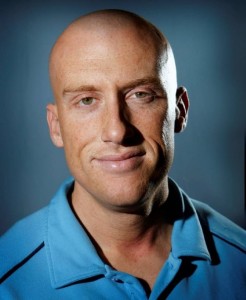 Back when I first started working out, I loved the feeling. When I first started working with clients, I loved hearing them tell me about it.
Back when I first started working out, I loved the feeling. When I first started working with clients, I loved hearing them tell me about it.
Soreness.
One of the first questions, in the old days, we use to ask clients who had been working out on their own, “are you getting sore still.” With little to no scientific research to back up our clams, we obliterated body parts into submission, thinking that everyone need to be sore to get results.
I was wrong.
To this day, I have attracted a client base that loves to be pushed and I love to push them. At times I can be relentless and somewhat domineering. However, I don’t believe the old school “Arnold rules” that says in order to achieve maximum results you must be so sore you cannot walk or move your arms. To be that sore every time you workout seems silly and counterproductive. Every once in a while is OK 🙂 I look to a segment of our population for proof that get paid to workout, professional bodybuilders. Ask any athlete, especially physique athletes and they will tell you the last thing they want to be is sore. It messes with their routine and training. It will happen from time to time but it doesn’t define their progress.
For research to back up my claim, here is a popular research article from the National Strength and Conditioning Journal by a couple of guys I have met and have heard speak several times.
Shifting through all the research jargon I took the following statement to heart, “the applicability of DOMS in assessing workout quality is inherently limited, and it therefore should not be used as a definitive gauge of results.” OK moving right along. Let us get out of the research world (secretly I dislike it) and move to the practical side of things.
You want to be sore? That is great but it does not actually mean you are progressing. It does mean you either broke down your muscle tissue down significantly to create DOMS (delayed onset of muscle soreness) or you introduce a new workout, exercise or rep scheme that your body was not ready for, thus causing soreness. Again, I love to be sore but the point is not to workout every time until you are are so sore you cannot move. This is counterproductive.
So here are my 3 reasons:
1. Soreness can interrupt to today’s workout: Recovery is important, being able to recover after a workout is even more important. If I am training a client full body 2-3 days per week and their legs are so sore they can barely lunge, squat or kettlebell swing this impedes my ability to program correctly for that day. Sure, if your legs are really sore, you can always do arms. However, I love when clients are pushed hard and have the ability to recover (because of adequate protein and rest) fast enough to workout at the same intensity or higher. How you recover workout to workout is more important than how sore you get workout to workout. *Reminder…this applies to people who push themselves. If you are not pushing yourself, there is no need for recovery, you are already recovered.
2. Intense soreness could mean a lack of quality nutrition and rest A little soreness hear and there is great. Not being able to move (unless you first started working out) is not so good. This could be an indication of improper rest and inadequate nutrition, in particular a lack of high quality protein intake. Protein’s job is to help build and repair muscle tissue. Without it, the muscle will break down and will continue to break down to the point of injury. Same thing goes for recovery. If your muscles never recover you can never get to your full potential.
3. Your body can only take so much I have to tell myself this all the time, “you can only workout so much.” I don’t get as much sleep as I would like and there are some days where I have to rely on protein shakes as my main food source. There is no way I could handle soreness that would prevent me from training myself day to day. Your neuromuscular system is not designed to take a pounding every single day. It needs rest and needs food. 3-4 days of vigorous workouts, coupled with some active rest or complete rest days is enough for most people to get where they want to be. Less is more in this case.
The point I am trying to prove is that you do not need to continuously push your body to point where how sore you get should be a concern. A little tenderness is OK, outright muscle pain, after every workout does not mean your muscles are growing and you are getting better. Do not use this as an indicator of such. Rant over.









Leave a Reply